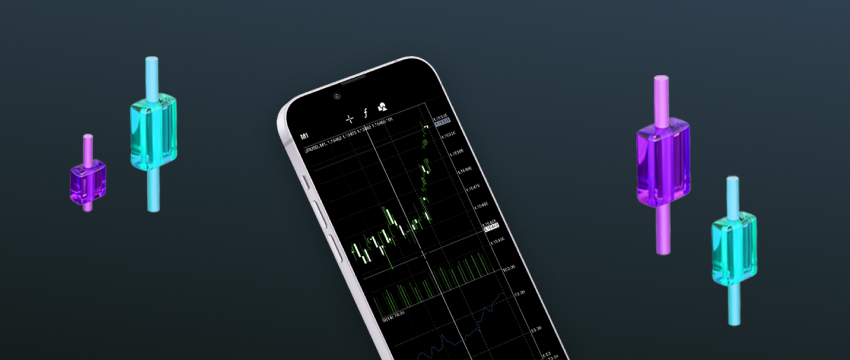Trading forex usually provides traders with multiple opportunities to generate revenue, but it also exposes them to continuous uncertainty and risk. Effective risk management is essential, as prices can move sharply and suddenly, news can come up unexpectedly, and emotions may take over your judgment at any moment.
If you want to build an effective trading journey, whether in forex, stocks or any other asset, understanding how to manage risk is of more importance than chasing fast revenue.
Smart risk management protects your funds, steadies your decision-making, and helps you maximize long-term gains in the market.
Why risk management is important
The financial markets reward consistency not just the end result. It is very easy to open an account and place a few successful trades. However, to have a consistently effective approach over the years requires one key skill, that is, risk management.
Irrespective of the instrument you are trading, managing risk is what usually differentiates experienced traders from beginners. Losses are inevitable, yet traders can limit their impact with proper risk management.
Protecting your capital is the main goal in order to keep trading in the future.
Eventually, all traders realise that their risk control is weak, even good strategies may fail without it. Unexpected market changes, sudden moves or a human mistake can turn a potentially good trade into a losing one.
Letting emotions in may lead to even more mistakes. For example, fear may lead to exiting a trade too soon. Greed may lead to overtrading or giving too much on a single trade.
When you plan your risk approach beforehand, you limit the influence of those emotions while giving yourself more confidence to make decisions.
Setting your risk tolerance
There is a simple core principle in forex trading, never risk too much on one trade. Experienced traders usually limit their exposure to 1-2% of their total capital each time they enter the market.
Although it might seem restrictive, this allows them to avoid “destroying” all of their account. This way, even a string of losing trades become just a slowdown rather than a disaster.
Here is where risk-reward ratio also comes in. You should know where to exit if the market moves against you and where to take profit if it goes your way, prior to entering a trade.
A lot of traders usually look for at least twice the potential reward compared to the potential loss. For example, with a 1:3 ratio you risk $1 to potentially gain $3.

Plan your trades ahead with smart risk management
Effective trading includes planning entry and exit points and setting precise stop-loss and take-profit orders in advance. Nowadays, trading platforms make this easier by automatically placing stops and profit targets once you open a position.
Deciding where to exit a trade in advance helps you avoid moving your stop or holding on to a meaningless position.
Another crucial part of planning is position sizing. Your trade size should match how far you set your stop-loss và how much of your account you want to risk.
If the market is volatile or your stop-loss is far away, trade a smaller amount to keep your risk the same. There are numerous position-sizing calculators available online to help you make confident and fast decisions.
Diversifying your portfolio
If all your positions are in the same market or theme, one unexpected event can hurt your entire portfolio.
To reduce this risk, you could diversify across multiple instruments or timeframes. You can also use hedging strategies to balance your exposure during volatile market periods.
Limit orders are equally useful. Professional traders usually set a limit on how much they’re willing to lose in a day or week. When they hit that, they take a step back to reevaluate instead of chasing losses.
This keeps you mentally focused while protecting your capital at the same time. If you trade while being angry or desperate it might lead to poor decisions, hence trades.
Avoiding common trading mistakes
The trader is usually the biggest threat to a trading account. The biggest threat to a trading account is often the trader. Moving a stop-loss when the market moves against you can turn a small loss into a big one.
There is also revenge trading where impulsive decisions are made to take back lost money. Overtrading and overconfidence can also be equally damaging.
To deal with the above, one has to be disciplined and reflect on their mistakes. Keep a trading journal that records both the numbers, the reasons and emotions behind each trade.
Go back and review those notes on a regular basis to spot patterns, correct mistakes, adjust and improve your strategy. Accepting loses is a key part of the trading journey which will help you stick to your plan and avoid emotional decisions.
Choosing the right broker
A reliable CFD broker and platform also play a key role in managing risk. Go for a forex broker that offers fast execution, transparent costs, services and features. Đòn bẩy linh hoạt is also valuable but keep in mind that it might increase both losses and profits.
However, risk management isn’t just about trades individually. Economic data, political events or unexpected changes in sentiment can all impact market conditions.
A strategy that works well when the market is calm might not work during volatile periods. So, you should stay updated on macroeconomic trends and be ready to adjust leverage or step back during unpredictable conditions.
Imagine how your portfolio would react to big news announcements to prevent surprises.

What tools do traders use for risk management?
A variety of tools is nowadays offered to enhance discipline automatically. For instance, there are standard and trailing stop-loss orders that help secure profits or cut losses without constant monitoring.
Take-profit orders lock in profits automatically instead of waiting and risking a market reversal. There are multiple advanced platforms that allow you to create brackets combining both so your plan is executed even if you are not in front of your screen.
Calculators and risk-management tools make it easier to determine position sizes, model risk-reward scenarios, and stress-test strategies.
Concepts like monitoring maximum drawdown, that used to be reserved for hedge funds, are now available through retail tools and broker portals. Through these metrics you get a realistic view of how a trading system would behave under tough conditions.
Final thoughts
Risk management is vital for an effective CFD trading journey. Since markets move fast and unexpectedly, emotions like fear or greed can easily influence any strategy.
If you define your risk per trade, set clear stop-loss and take-profit orders, size positions and diversify your portfolio, you maintain control and protect your capital more easily.
Discipline is also important, such as keeping a trading journal, reviewing previous trades and adjusting your strategy.
Last but not least, choosing a trusted forex broker with strong execution and risk-management tools helps strengthen your knowledge and approach.
Having a consistently effective strategy depends on making informed decisions and letting risk management guide every step of your journey rather than chasing fast revenue.
Khước từ trách nhiệm: This material is for general informational and educational purposes only and should not be considered investment advice or an investment recommendation. T4Trade is not responsible for any data provided by third parties referenced or hyperlinked in this communication.




